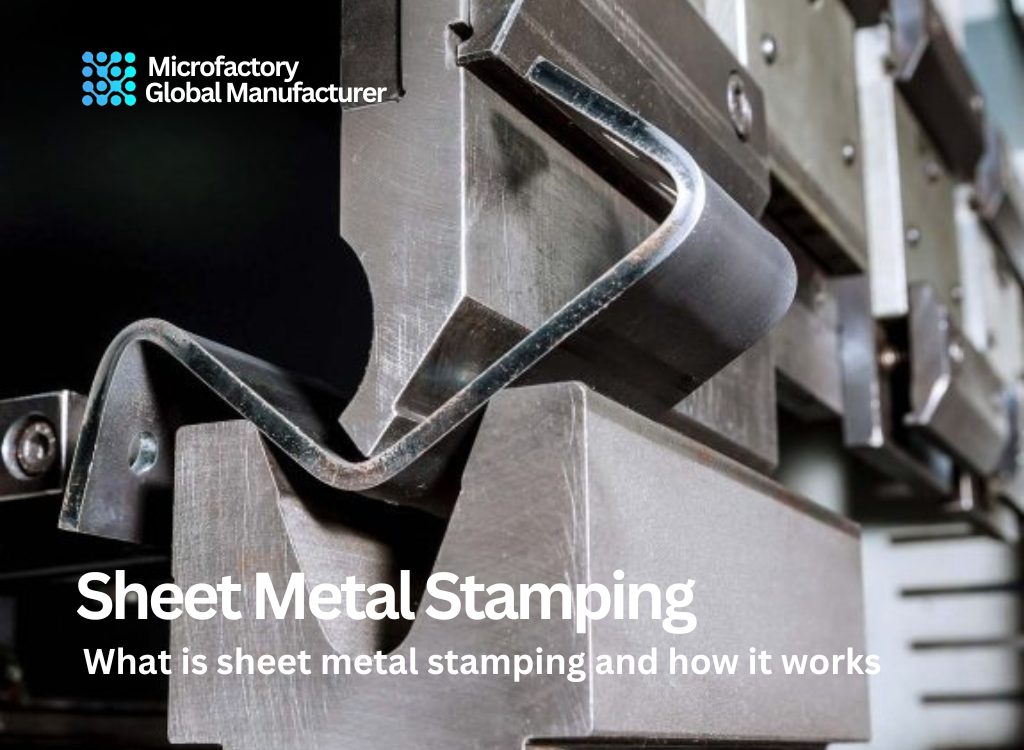Ever wondered how your car door was made, or how that sleek metal casing on your laptop came to be? The answer lies in the magic of sheet metal stamping. It’s a process that might seem pretty complex, but it’s actually quite fascinating once you get the hang of it. In this article, we’re gonna break down what sheet metal stamping is, how it works, and why it’s such a big deal in the manufacturing world.
What is Sheet Metal Stamping?
The Basics
Sheet metal stamping is a manufacturing process that involves forming flat sheets of metal into specific shapes. Imagine a giant cookie cutter, but instead of dough, you’re working with metal sheets, and instead of simple shapes, you’re creating intricate parts for cars, electronics, appliances, and more.
Why It Matters
This process is crucial because it allows manufacturers to produce high volumes of parts with precision and consistency. Think about it – every car on the road has thousands of stamped metal parts, all fitting together perfectly to ensure safety and functionality. Without sheet metal stamping, mass production of complex metal parts would be a logistical nightmare.
How Sheet Metal Stamping Works
The Equipment
Let’s dive into the nitty-gritty of how this process works. At the heart of sheet metal stamping is the press machine. This beast of a machine uses a combination of dies and punches to cut, bend, and shape metal into the desired form.
- Press Machine: The powerhouse that drives the process. It can exert tons of pressure to shape the metal.
- Dies: These are custom-made tools that determine the shape and features of the final product. Think of them as the mold.
- Punches: They push the metal into the dies to create the desired shape.
The Process
Here’s a step-by-step look at how sheet metal stamping goes down:
- Designing the Die: Before anything, engineers design a die that matches the part’s specifications.
- Cutting the Metal: Large sheets of metal are cut into smaller, manageable pieces.
- Feeding the Metal: These pieces are fed into the press machine.
- Stamping: The press machine uses the punch and die to stamp the metal, shaping it into the desired form.
- Ejecting the Part: The finished part is ejected from the machine, ready for further processing or assembly.
Types of Stamping Processes
Not all stamping processes are created equal. Here are some of the most common types:
- Blanking: Cutting out a flat piece of metal from a larger sheet.
- Bending: Bending the metal along a straight line.
- Punching: Creating holes or shapes within the metal.
- Coining: A precise stamping that produces fine details.
- Embossing: Creating raised or recessed designs on the metal surface
Types of Sheet Metal Stamping Operations
- Blanking: Cutting out flat pieces (blanks) from a sheet of metal.
- Punching: Creating holes or cutouts in the sheet metal by applying force through a punch.
- Bending: Changing the angle or shape of the metal by applying force along a specific line.
- Drawing: Stretching the metal to form a deeper, cup-like shape.
- Embossing: Creating raised or recessed designs on the metal surface.
Images of sheet metal




Advantages of Sheet Metal Stamping
Precision and Consistency
One of the biggest advantages of sheet metal stamping is its ability to produce parts with incredible precision and consistency. When you’re manufacturing thousands of parts, you need each one to be exactly the same – and stamping makes that possible.
Cost-Effectiveness
Once the dies are made, sheet metal stamping is a very cost-effective way to produce large quantities of parts. The initial setup might be pricey, but the cost per part drops significantly with high-volume production.
Speed
Stamping is a fast process. Once the setup is complete, the press machine can churn out parts at an impressive rate. This speed is essential for industries that need to produce large numbers of parts quickly, like automotive and electronics.
Versatility
Sheet metal stamping is incredibly versatile. It can be used to create parts of various shapes and sizes, from tiny electronic components to large automotive panels. This flexibility makes it a go-to method for many industries.
Future of sheet metal
1. Automation and Smart Manufacturing
- Robotics and AI Integration: In microfactories, robots and AI-driven processes are increasingly being used for tasks like bending, cutting, and forming sheet metal. These systems can optimize production by improving accuracy, speed, and repeatability. Automated metal fabrication reduces the need for human labor and minimizes errors, allowing microfactories to produce high-quality components at lower costs.
- Adaptive Manufacturing: AI and machine learning systems could enable real-time monitoring and adaptation during the sheet metal fabrication process, reducing waste and improving material efficiency.
2. Advanced Fabrication Techniques
- Laser Cutting and 3D Metal Printing: Laser cutting will continue to advance in precision and efficiency, making it a staple for sheet metal processing in microfactories. Additionally, 3D metal printing (additive manufacturing) could complement sheet metal use, enabling microfactories to produce complex parts that combine different manufacturing methods, including forming and bending thin metal layers.
- High-Speed Forming: New technologies like high-speed hydraulic presses and servo-electric presses will allow microfactories to handle small batch production more efficiently, with quicker tooling changes and higher precision.
3. Sustainable and Lightweight Materials
- Recyclable and Lightweight Metals: There is a growing demand for lighter and more sustainable metals, such as aluminum and advanced steel alloys, in industries like automotive, aerospace, and consumer electronics. Microfactories may focus on these materials for production due to their environmental benefits and suitability for high-performance applications.
- Circular Manufacturing: Microfactories may integrate recycling processes directly into their production lines. Scrap metal can be reprocessed onsite, supporting sustainability goals and reducing material costs.
Common Applications of Sheet Metal Stamping
Automotive Industry
Cars and trucks are loaded with stamped metal parts. From body panels to structural components, sheet metal stamping is key to building vehicles that are both safe and stylish.
Electronics
Ever looked inside your phone or laptop? Many of those tiny metal parts are made using sheet metal stamping. It’s crucial for producing the precise and intricate components needed for modern electronics.
Appliances
Your refrigerator, washing machine, and microwave all have stamped metal parts. This process helps create the durable and functional components that make these appliances reliable.
Aerospace
In the aerospace industry, precision and durability are paramount. Sheet metal stamping helps produce the parts that ensure airplanes and spacecraft can withstand the rigors of flight.
FAQs About Sheet Metal Stamping
How durable are stamped metal parts?
Stamped metal parts are highly durable, which is why they’re used in demanding industries like automotive and aerospace. The process of stamping can actually strengthen the metal, making it more resilient.
Can sheet metal stamping be used for small production runs?
While sheet metal stamping is most cost-effective for high-volume production, it can be used for smaller runs. However, the cost per part will be higher compared to large-scale production.
What metals can be used in sheet metal stamping?
A wide variety of metals can be used, including steel, aluminum, brass, copper, and more. The choice of metal depends on the requirements of the final product, such as strength, weight, and corrosion resistance.
Is sheet metal stamping environmentally friendly?
Sheet metal stamping can be environmentally friendly, especially when using recyclable metals. The process itself produces minimal waste, and any scrap metal can often be recycled.
Conclusion
Sheet metal stamping might not be something you think about every day, but it plays a massive role in our modern world. From the cars we drive to the gadgets we can’t live without, this process makes it all possible. By understanding what sheet metal stamping is and how it works, we can appreciate the incredible engineering and precision that goes into manufacturing the things we use every day.
Whether you’re an engineer, a car enthusiast, or just someone curious about how things are made, the world of sheet metal stamping is a fascinating one. So next time you see a shiny new car or hold your sleek smartphone, you’ll know a bit more about the magic that made it all possible.


